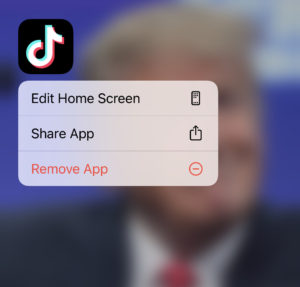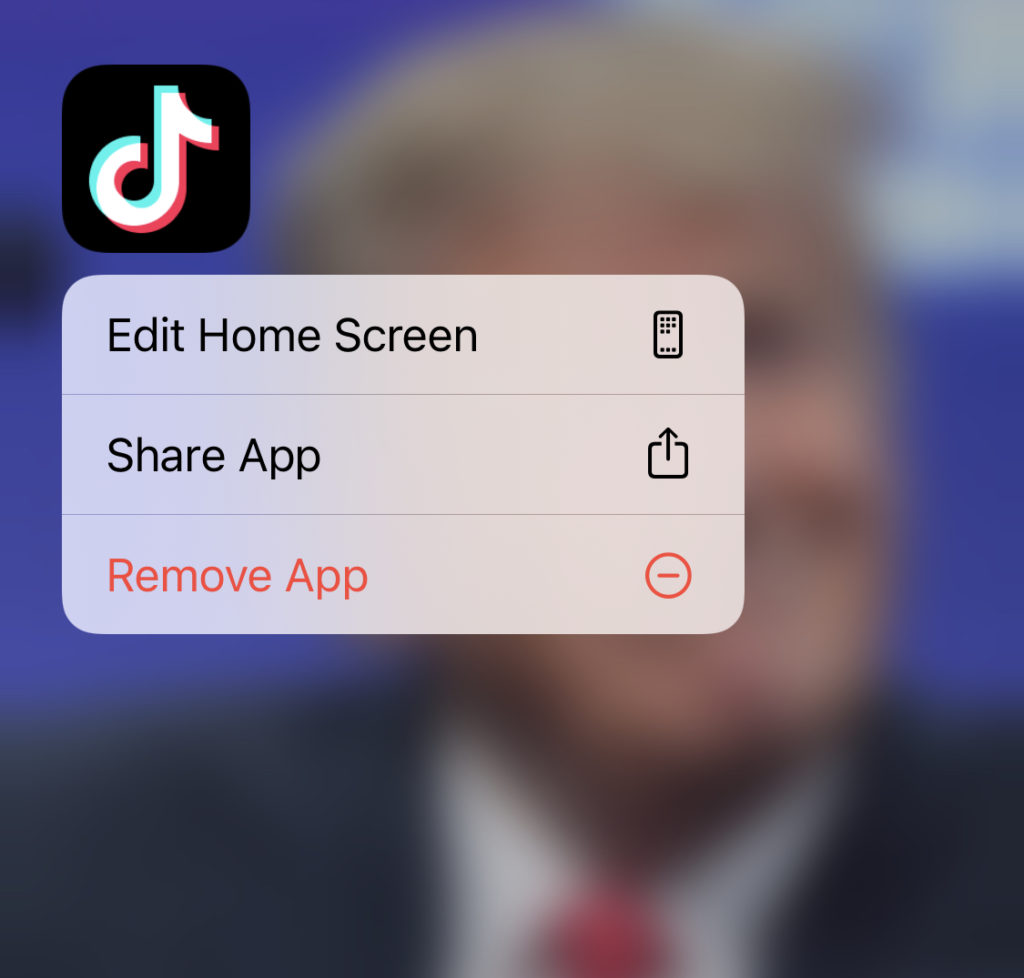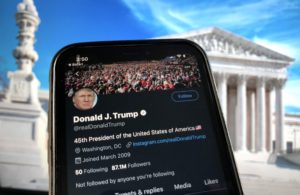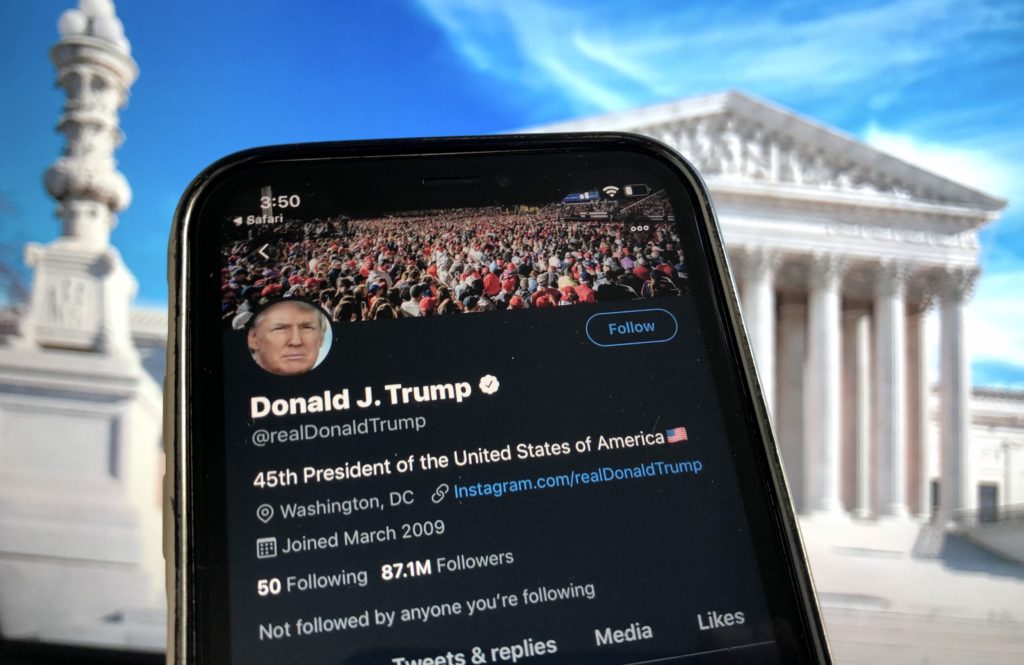Benjamin Riley
Social Media’s Rise to the Forefront
Over the last few decades, social media platforms have gained immense popularity with Americans,[1] and statistics point to the average American having accounts on multiple platforms.[2] Yet, as is the case with many trends, this growth has not come without its fair share of controversy. These platforms have taken center stage in many recent legal battles, perhaps most notably a high-profile case decided by the Supreme Court this summer that explored First Amendment issues and the dissemination of information through social media platforms.[3] Moreover, there has also been a wide array of legislative proposals relating to social media in 2024.[4] Apart from constitutional disputes and state legislation, questions have also been raised about worrisome political ramifications[5] and potential health effects.[6] Needless to say, social media’s rise to the forefront of the American consciousness has not been unanimously applauded.
Government Officials Take Action
Recently, concerns over social media’s health effects on children and teenagers have become a frequently discussed topic.[7] This concern was addressed by the Surgeon General of the United States, Vivek H. Murthy, in an advisory released in mid-2023, warning that social media can affect the well-being of the country’s young people.[8] This advisory was escalated in June of 2024 to a powerfully worded, public message to Congress and the country explaining that a Surgeon General’s warning on social media platforms is needed.[9] The message, which appeared as an opinion piece in The New York Times, draws attention to the effect social media has on children’s anxiety, depression, and self-image.[10] Moreover, the message also points to how surgeon general’s warning labels were able to combat tobacco use, in an attempt to establish the efficacy of these warnings.[11] Along with calling for warnings on the platform, the Surgeon General also challenged parents, medical professionals, schools, and companies to all play a role in limiting the adverse effects of social media.[12]
This opinion received a powerful show of support when a coalition of forty-two attorneys general, including North Carolina’s Attorney General Josh Stein, wrote a letter in support of the Surgeon General’s call for a warning on social media platforms.[13] The letter, which was addressed to Speaker of the House Mike Johnson, Senate Majority Leader Chuck Schumer, and Senate Minority Leader Mitch McConnell, argues that Congress can take action against the threats of social media and “protect future generations of Americans.”[14]
The letter explains that social media is contributing to a “mental health crisis” in children and teenagers.[15] This language makes clear the urgency with which the writers believe the issue needs to be addressed. More specifically, the letter takes issue with “algorithm-driven social media platforms,” and reinforces many of the concerns presented in the Surgeon General’s New York Times opinion.[16] Previous legislation and legal action taken by both state legislatures and State Attorneys General are highlighted, as well as ongoing state investigations and litigation against the social media powerhouse TikTok.[17] However, it is contended that “this ubiquitous problem requires federal action.”[18] According to the group, a surgeon general’s warning on social media platforms “would be a consequential step” in addressing this problem.[19] This letter follows legal action taken by a similar coalition of State Attorneys General last fall, where lawsuits were filed against social media giant Meta, alleging that features on Meta’s social media platforms adversely affect children. [20]
One of the more interesting aspects of this letter is the impressively bipartisan nature of the coalition. The alliance of forty-two attorneys general is comprised of differing political ideologies and is spread across the country. The uniqueness of this cooperation is not lost in the letter, which explains that “[a]s State Attorneys General we sometimes disagree about important issues, but all of us share an abiding concern for the safety of the kids in our jurisdiction.”[21] The willingness of officials to work together on combating the adverse effects of social media can also be seen in recent legislation at the federal level. The Kids Online Safety Act, which was proposed by Senator Richard Blumenthal, a Democrat, has been cosponsored by many lawmakers on both sides of the aisle.[22]
It is also worth noting what this letter signals to social media companies. The letter accuses social media companies of being complacent in the crisis by saying the “problem will not solve itself and the social media platforms have demonstrated an unwillingness to fix the problem on their own.”[23] Moreover, with attorneys general making children’s online safety a priority,[24] this letter should serve as a reminder to social media companies that policymakers are unlikely to relent in their pursuit of greater safety measures on social media.
Future Implications
At this time, it is unclear if Congress will follow the advice given by the Surgeon General and subsequently endorsed by many attorneys general. Similarly, it is also unclear whether these warnings would have any effect on children’s social media usage and the associated health effects.
However, while the viability of a surgeon general’s warning and its actual efficacy cannot yet be known, developments like this show that officials are unlikely to alleviate any of the pressure they have placed on social media companies. Officials calling for these warnings should be interpreted as an escalation against the youth mental health crisis, and consequently social media companies. In short, social media companies should expect further bipartisan action to counteract the negative side effects of social media, and citizens should be prepared that some of their favorite platforms may soon carry a warning about the potential health effects of scrolling.
[1]See Belle Wong, Top Social Media Statistics and Trends of 2024, Forbes Advisor, https://www.forbes.com/advisor/business/social-media-statistics/ (May 18, 2023, 2:09 PM).
[2] Id.
[3] See Murthy v. Missouri, 144 S. Ct. 1972 (2024).
[4] See Social Media and Children 2024 Legislation, National Conference of State Legislatures, https://www.ncsl.org/technology-and-communication/social-media-and-children-2024-legislation (June 14, 2024).
[5] See Stephanie Burnett & Helen Coster, Fake U.S. Election-Related Accounts Proliferating on X, Study Says, Reuters (May 24, 2024, 8:31 AM) https://www.reuters.com/world/us/fake-us-election-related-accounts-proliferating-x-study-says-2024-05-24/; U.S. Groups Urge Social Media Companies to Fight ‘Big Lie,’ Election Misinformation, Reuters (May 12, 2022, 10:07 AM), https://www.reuters.com/world/us/us-groups-urge-social-media-companies-fight-big-lie-election-disinformation-2022-05-12/; Tiffany Hsu & Steven Lee Myers & Stuart A. Thompson, Elections and Disinformation Are Colliding Like Never Before in 2024, N.Y. Times, https://www.nytimes.com/2024/01/09/business/media/election-disinformation-2024.html (Jan. 11, 2024).
[6] See Teens and Social Media Use: What’s the Impact?, Mayo Clinic (Jan. 18, 2024), https://www.mayoclinic.org/healthy-lifestyle/tween-and-teen-health/in-depth/teens-and-social-media-use/art-20474437.
[7] See Claire Cain Miller, Everyone Says Social Media is Bad for Teens. Proving it is Another Thing, N.Y. Times: The Upshot (June 17, 2023), https://www.nytimes.com/2023/06/17/upshot/social-media-teen-mental-health.html; Natalie Proulx, Does Social Media Harm Young People’s Mental Health?, N.Y. Times (May 25, 2023) https://www.nytimes.com/2023/05/25/learning/does-social-media-harm-young-peoples-mental-health.html.
[8] Surgeon General Issues New Advisory About Effects Social Media Use Has on Youth Mental Health, U.S. Department of Health and Human Services (May 23, 2023), https://www.hhs.gov/about/news/2023/05/23/surgeon-general-issues-new-advisory-about-effects-social-media-use-has-youth-mental-health.html.
[9] See Vivek H. Murthy, Surgeon General: Why I’m Calling for a Warning Label on Social Media Platforms, N.Y. Times (June 17, 2024), https://www.nytimes.com/2024/06/17/opinion/social-media-health-warning.html.
[10] Id.
[11] Id.
[12] Id.
[13] Letter from Rob Bonta, Cal. Att’y Gen., Phil Weiser, Colo. Att’y Gen., Russel Coleman, Ky. Att’y Gen., Lynn Fitch, Miss. Att’y Gen., Matthew J. Platkin, N.J. Att’y Gen., Letitia James, N.Y. Att’y Gen., Jonathan Skrmetti, Tenn. Att’y Gen., Steve Marshall, Ala. Att’y Gen., Fainu’ulelei Falefatu Ala’ilima-Uta, Am. Sam. Att’y Gen., Tim Griffin, Ark. Att’y Gen., William Tong, Conn. Att’y Gen., Kathleen Jennings, Del. Att’y Gen., Brian Schwalb, D.C. Att’y Gen., Ashley Moody, Fla. Att’y Gen., Christopher M. Carr, Ga. Att’y Gen., Anne E. Lopez, Haw. Att’y Gen., Raúl Labrador, Idaho Att’y Gen., Kwame Raoul, Ill. Att’y Gen., Todd Rokita, Ind. Att’y Gen., Aaron M. Frey, Me. Att’y Gen., Anthony G. Brown, Md. Att’y Gen., Andrea Joy Campbell, Mass. Att’y Gen., Dana Nessel, Mich. Att’y Gen., Keith Ellison, Minn. Att’y Gen., Aaron D. Ford, Nev. Att’y Gen., John M. Formella, N.H. Att’y Gen., Raúl Torrez, N.M. Att’y Gen., Josh Stein, N.C. Att’y Gen., Drew H. Wrigley, N.D. Att’y Gen., Gentner Drummond, Okla. Att’y Gen., Ellen F. Rosenblum, Or. Att’y Gen., Michelle Henry, Pa. Att’y Gen., Peter F. Neronha, R.I. Att’y Gen., Alan Wilson, S.C. Att’y Gen., Marty Jackley, S.D. Att’y Gen., Gordon C. Rhea, V.I. Att’y Gen. (Nominee), Sean D. Reyes, Utah Att’y Gen., Charity Clark, Vt. Att’y Gen., Jason S. Miyares, Va. Att’y Gen., Robert W. Ferguson, Wash. Att’y Gen., Joshua L. Kaul, Wis. Att’y Gen., Bridget Hill, Wyo. Att’y Gen., to Mike Johnson, Speaker of the House, Chuck Schumer, Senate Majority Leader, Mitch McConnel, Senate Minority Leader (Sept. 9, 2024) (on file with the National Association of Attorneys General).
[14] Id.
[15] Id.
[16] Id.
[17] Id.
[18] Id.
[19] Id.
[20] See Barbara Ortutay, States Sue Meta Claiming its Social Platforms are Addictive and Harm Children’s Mental Health, Associated Press https://apnews.com/article/instagram-facebook-children-teens-harms-lawsuit-attorney-general-1805492a38f7cee111cbb865cc786c28 (Oct. 24, 2023); Cristiano Lima-Strong & Naomi Nix, 41 States Sue Meta, Claiming Instagram, Facebook are Addictive, Harm Kids, Washington Post, https://www.washingtonpost.com/technology/2023/10/24/meta-lawsuit-facebook-instagram-children-mental-health/ (Oct. 24, 2024, 3:25 PM).
[21] Letter from Rob Bonta et. al. to Mike Johnson et. al., supra note 13.
[22] The Kids Online Safety Act, S. 1409, 118th Cong. (2023).
[23] Letter from Rob Bonta et. al. to Mike Johnson et. al., supra note 13.
[24] Attorney General Josh Stein Urges Congress to Require Warning on Social Media Platforms, N.C. Department of Justice (Sept. 11, 2024), https://ncdoj.gov/attorney-general-josh-stein-urges-congress-to-require-warning-on-social-media-platforms/; see Ortutay, supra note 20.











